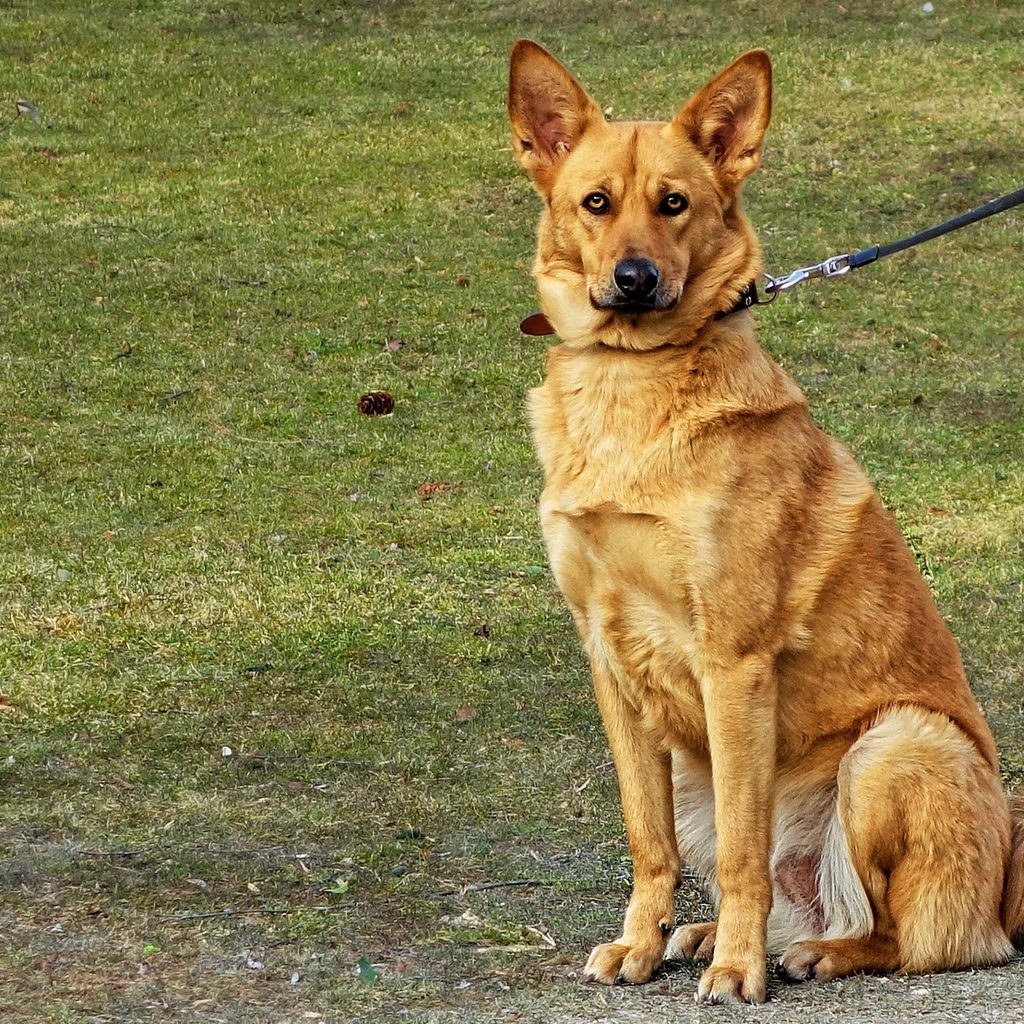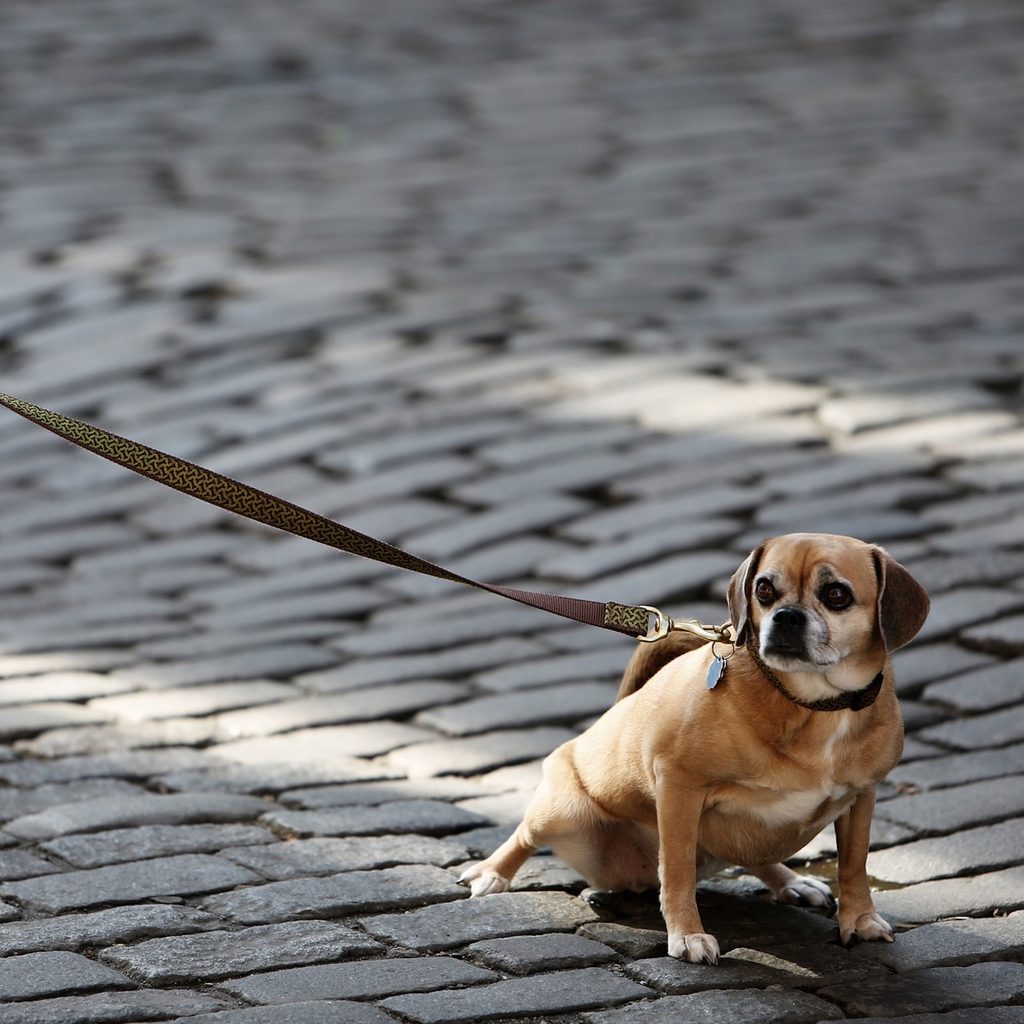Time for a walk! Learning how to walk on a leash is oh-so-important for any dog to learn, especially if they’re coming with you to work, on vacation, or to any public place. But when a pup isn’t comfortable on her leash, things aren’t likely to go well. There are several important factors to consider when selecting the perfect leash, but it’s totally okay to try out a few with your dog before making your decision. You want her to be comfy, too, after all!
Whether you’re looking into different materials, lengths, or dog leash types, there’s one out there for you. Once you’re armed with the knowledge of how to find the right leash, it’ll be time to take Fido shopping. Are you ready for your next adventure?

Types of dog leashes
When leash shopping, it’s important to know the differences between the types of leads you may see. They may look the same at first, but having an appropriate lash can be the difference between security and danger. These are the most common kinds of leashes:
Standard leash
Most leashes are simple 4- to 6-foot-long strips of leather or nylon (more on leash material below) that latch onto a dog’s collar or harness with a clip on one end. The other end has a loop for the owner to hold or wear around their wrist so that the dog is always secure. This type of leash has no bells or whistles but is great for basic walking and training, though there are adjustable standard leashes that work via reattachable extension pieces. These adjustable leashes are safer and generally a better choice than retractable leashes.
Martingale lead
This type of leash is great for dogs who pull, which is why it’s also known as the no-slip leash. When a dog pulls, the martingale lead constricts gently — not enough to choke or hurt your dog since it cannot tighten more than you adjust it to — keeping her safe in her collar. These setups are ideal for breeds like greyhounds who have heads slimmer than their necks.
Chain leash
This type of leash is just like your standard dog leash, except it’s made of metal chain rather than fabric. Chain is ideal for pups who like to chew on their leash, though not all dogs are deterred by the metal alone. Some give up when they learn they can’t chew through it, but others consider it a game. Keep an eye on her teeth if she chews on this leash!

Decide what’s important to you
Once you know the lingo, there are a few important factors to consider when leash shopping. Remember that your number-one priority should be the safety of your pet.
Leash material
Most standard dog leashes are made of leather or nylon, though you can find others (cotton, rubber, etc.) as well. Keep in mind these alternative materials are generally not nearly as durable. Nylon and leather are preferred because they’re not heavy enough to harm a puppy, but they’re still strong enough to hold up against a full-grown dog.
Many materials are designed with your pup’s safety in mind, so it never hurts to explore your options. It’s not rare to find reflective materials for nighttime walking or extra-durable varieties for teething puppies.
Leash length and width
Don’t forget to factor in the size and activity level of your pup before purchasing a certain weight of leash. A Chihuahua won’t need as wide a leash as a mastiff would, for example, but a dog who pulls will need extra security, no matter their size.
The length of your dog’s leash will determine how far from you she can wander while out and about. A shorter lead tends to give you more control, which is important for pups who like to pull. At the same time, since shorter leashes give your dog less room to wander, you’ll be making most of her detours with her. The standard leash is 6 feet long, but longer leashes may be useful in certain situations, like training.
Collar and/or fastener
Generally, a standard leash attaches to your dog’s harness or collar with a D-clip on one end. Because the leash is effective only if your dog is securely attached to it, though, a collar may not always be enough. Many dogs learn how to back out of a collar when pulling on the leash, which is why a harness can be so helpful.
When looking at the clip itself, you will see either a “bolt snap” clip, which uses a spring to keep closed until you manually slide it open, or a “trigger snap” clip. This type opens inward using a much larger spring; both of these qualities make it more difficult for the clip to break. Bolt snap clips are still very reliable and are the most common clip you’ll see.
Whichever type, length, and material of leash fit best for your pup’s lifestyle, don’t think for a minute that you won’t find something perfect. When in doubt, ask the knowledgeable folks at your local pet store or vet for suggestions. Leash training, like any new habit, takes time to get used to, but you’ll have the best-behaved walking buddy before you know it!



